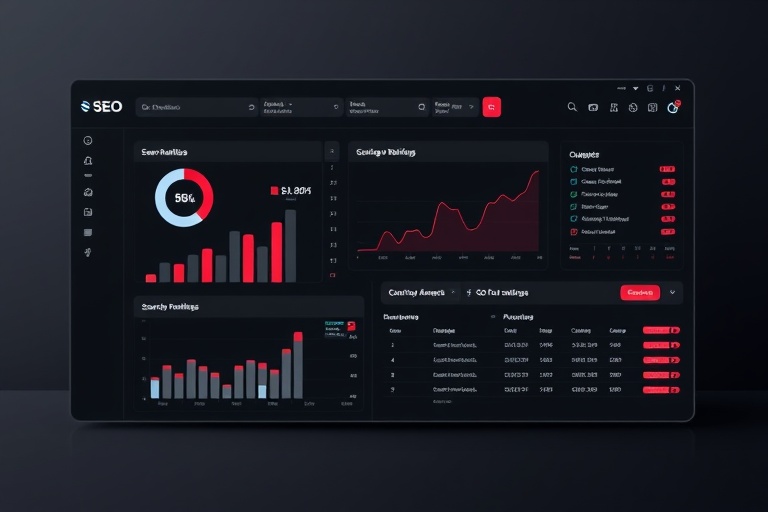
AI SEO for Beginners: How AI Helps You Rank Faster With Less Work
Discover how AI-powered SEO tools can help you rank higher in search results faster and with less effort. Learn practical strategies for beginners.
Transform your business with intelligent automation, data-driven SEO, and conversion-focused strategies. Get more leads, save time, and scale faster with Meediax Digital.
We understand the challenges small and medium businesses face. That's why we've built AI-powered solutions that deliver measurable results.
Comprehensive digital marketing and AI automation solutions designed to help your business thrive in the modern marketplace.
Dominate search rankings with intelligent keyword research, AI-assisted content creation, and topic authority building that drives organic traffic and qualified leads.
Professional websites with ongoing care, maintenance, and optimization. No large upfront costs—just affordable monthly plans that keep your site fast, secure, and updated.
Transform your operations with intelligent automation. Capture leads automatically, nurture prospects with smart workflows, and free up your team to focus on growth.
We're not just another digital marketing agency. We're your growth partner, combining AI innovation with proven strategies to deliver exceptional results.
We leverage cutting-edge artificial intelligence to deliver faster, smarter, and more effective marketing solutions that traditional agencies simply can't match.
Our intelligent automation systems work 24/7 to capture leads, nurture prospects, and drive conversions while you focus on running your business.
Build marketing infrastructure that grows with you. Our systems are designed to scale from startup to enterprise without breaking your budget.
No hidden fees, no surprise charges. Just transparent, affordable monthly plans that deliver exceptional value and predictable costs.
Work with a team that understands the UK market. Get responsive support, strategic guidance, and partnership that drives real business growth.
Every strategy is backed by data and analytics. We track, measure, and optimize continuously to ensure maximum ROI on your marketing investment.
Our AI-powered strategies and automation systems deliver measurable outcomes that transform businesses across the UK.
E-commerce client saw dramatic lead growth within 90 days
Service business eliminated manual admin tasks through automation
SaaS company boosted customer retention with automated nurturing
B2B client tripled returns with AI-powered SEO and automation
A London-based business consulting firm was struggling with inconsistent lead flow and time-consuming manual processes. After implementing our AI-powered SEO content strategy and lead automation system, they experienced transformative growth.

Don't just take our word for it. Here's what business owners across the UK are saying about working with Meediax Digital.
"Meediax transformed our lead generation completely. We went from 10-15 inquiries per month to over 40 qualified leads. The AI automation saves us at least 15 hours every week, and the ROI has been incredible."
"The SEO content service is outstanding. Our organic traffic increased by 180% in just 4 months, and we're now ranking on page one for our most important keywords. The team really knows their stuff."
"The web design subscription is perfect for our business. Our website is always up-to-date, fast, and secure. For £99 a month, we get professional management without the hassle. Best decision we made this year."
"Communication with Meediax has been exceptional. They respond quickly, explain everything clearly, and actually deliver on their promises. The automation workflows they built have revolutionized how we handle customer onboarding."
"Reliable, professional, and results-driven. The support team is always there when we need them, and the monthly reports show clear progress. Our customer retention improved by 40% thanks to their automated email sequences."
Stay ahead with expert tips, strategies, and trends to help your business thrive in the digital age.

Discover how AI-powered SEO tools can help you rank higher in search results faster and with less effort. Learn practical strategies for beginners.
Master AI content creation with tools and strategies for creating high-quality marketing content that drives results.
Protect your small business from cyber threats with essential security strategies and best practices.
Master Google Ads with proven strategies for creating profitable campaigns and maximizing ROI.
No hidden fees, no surprise charges. Choose the plan that fits your business needs and budget.
Perfect for startups and small businesses getting started online
Ideal for growing businesses that need comprehensive management
Complete solution for businesses serious about growth
Need a custom solution? We can create a tailored package for your specific needs.
Contact us for custom pricingGot questions? We've got answers. Here's everything you need to know about working with Meediax Digital.
We combine cutting-edge AI technology with proven marketing strategies to deliver faster, more effective results. Unlike traditional agencies, we focus on automation and scalability, which means you get better outcomes at lower costs. Our transparent monthly pricing and UK-based support also set us apart.
Still have questions? We're here to help.
Contact us directlyJoin hundreds of UK businesses that are growing faster, working smarter, and achieving better results with Meediax Digital. Book your free strategy call today and discover how we can help you reach your goals.